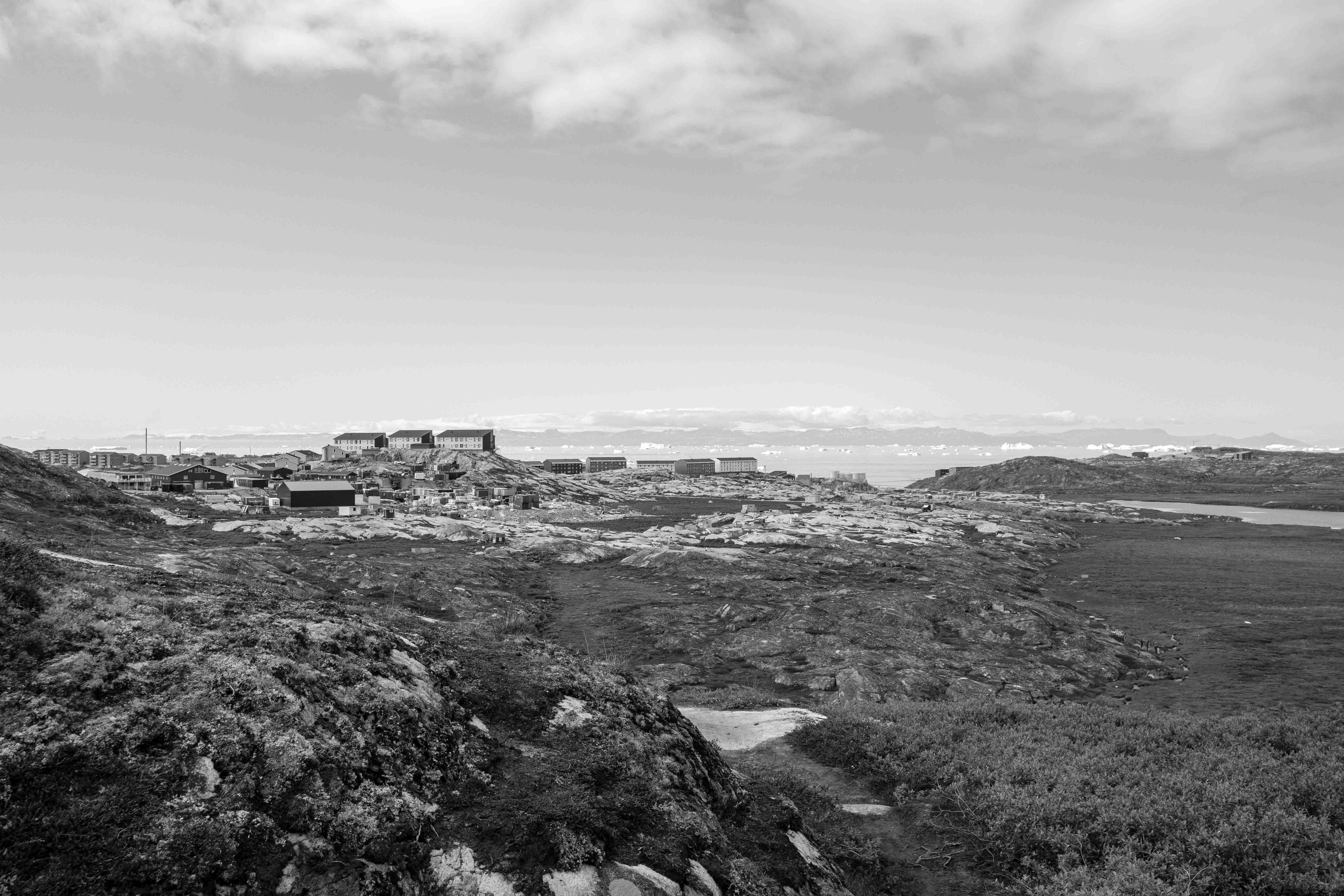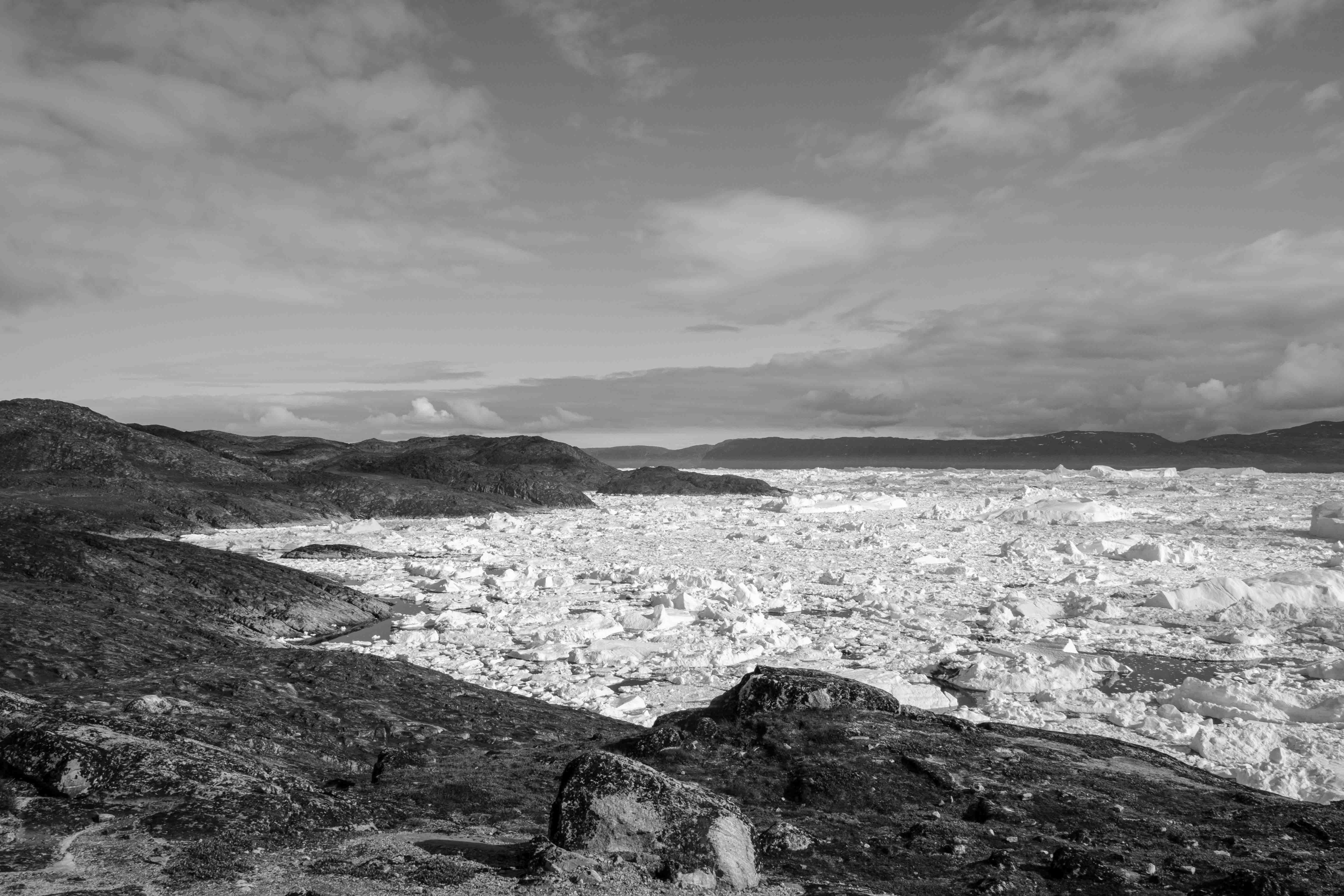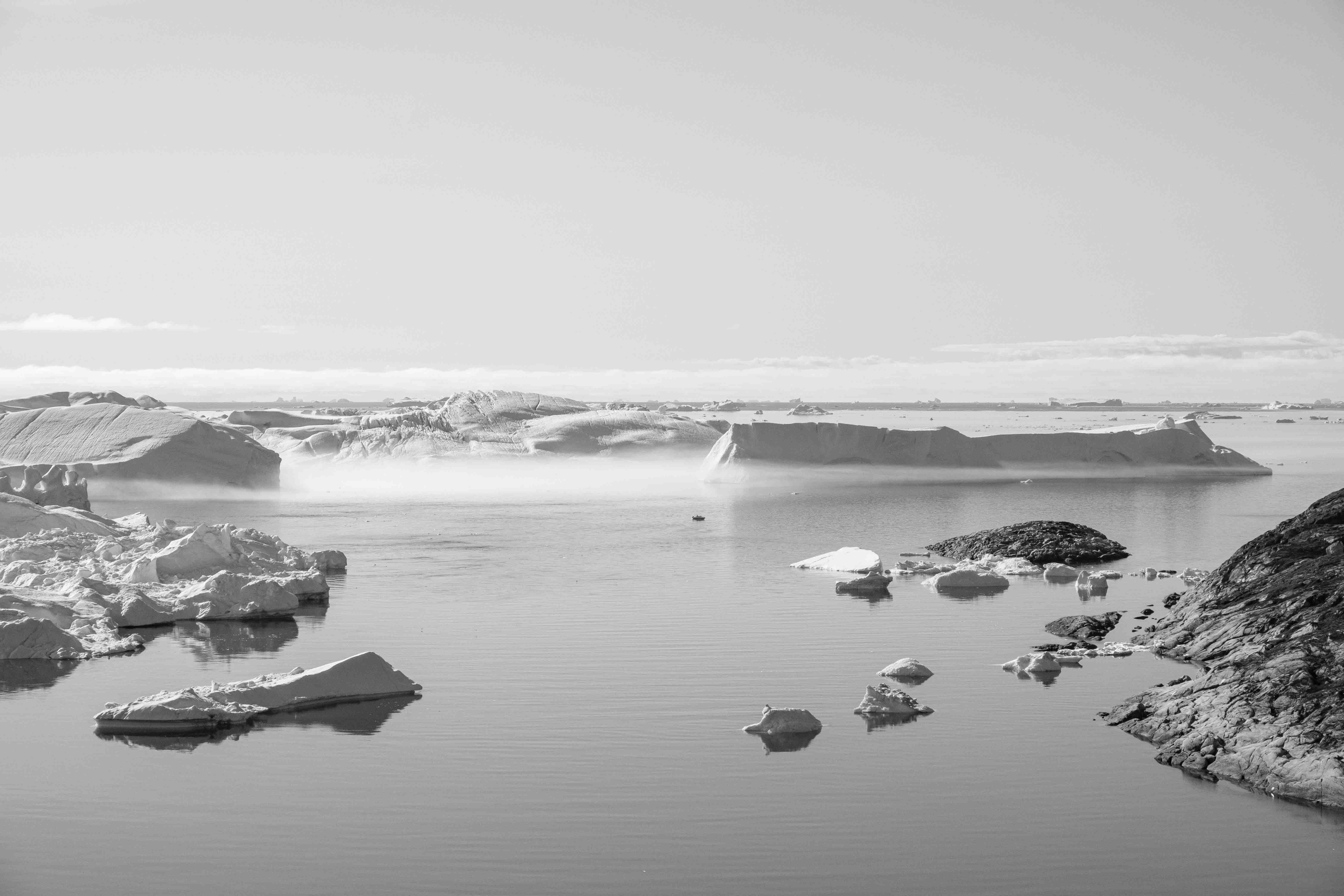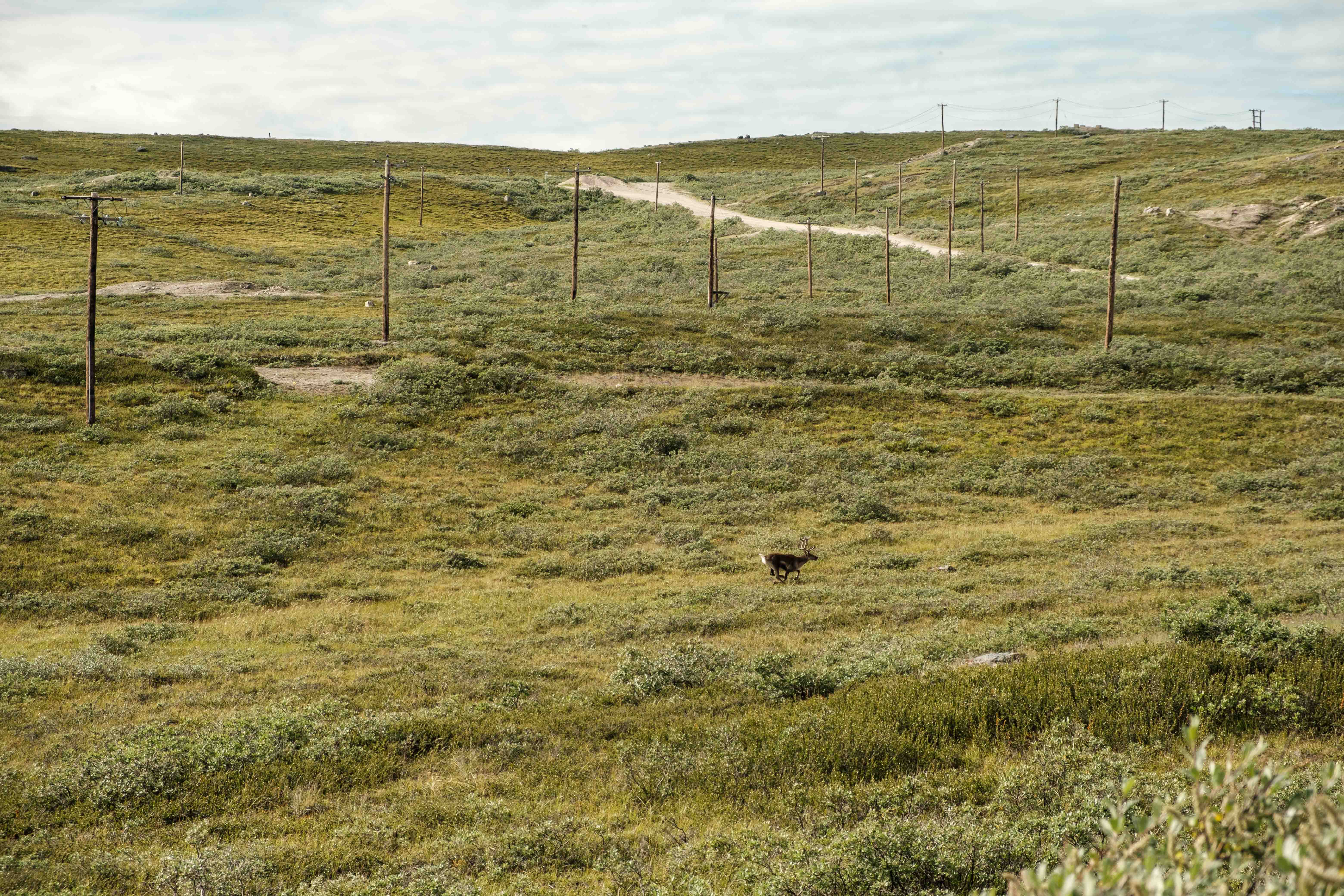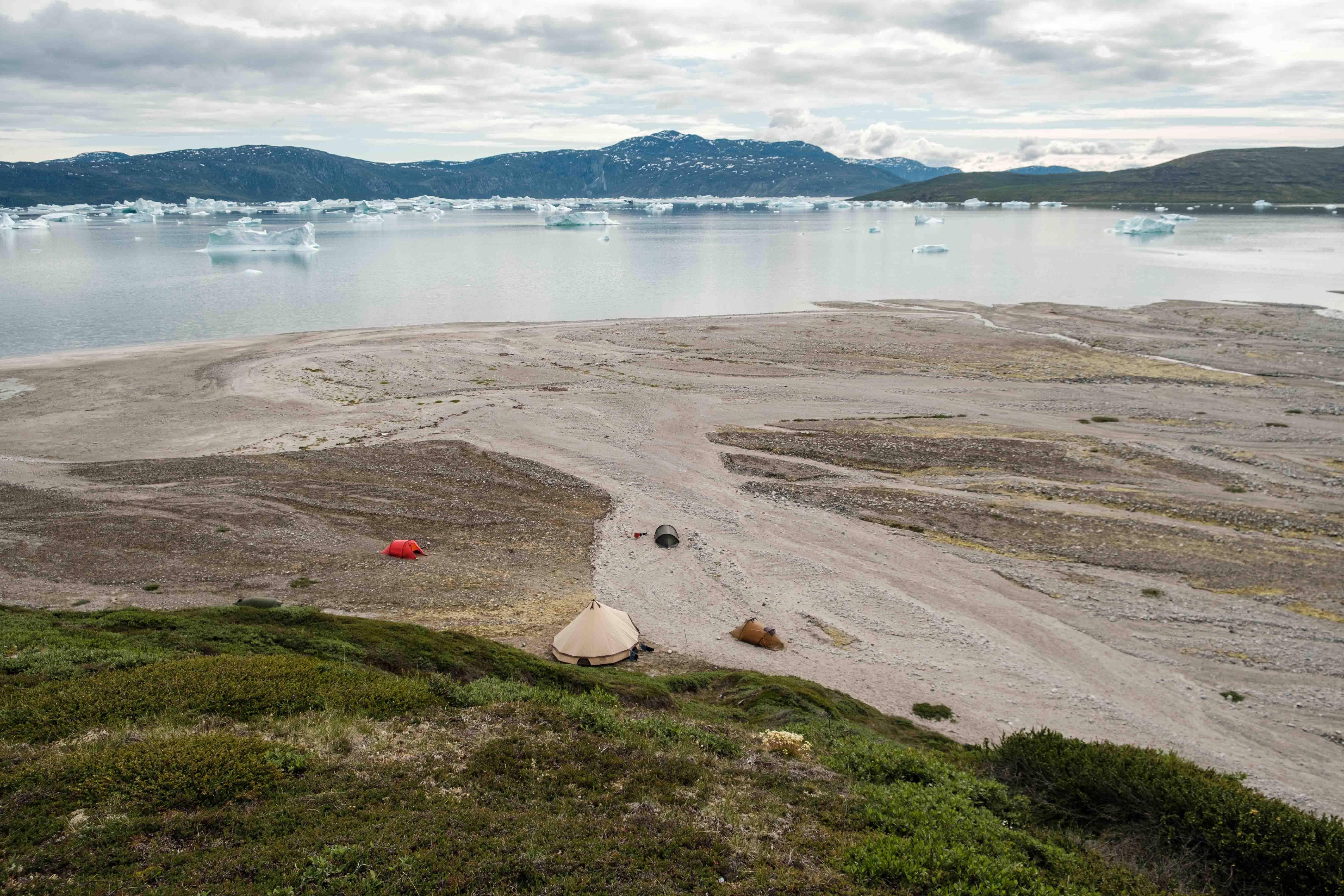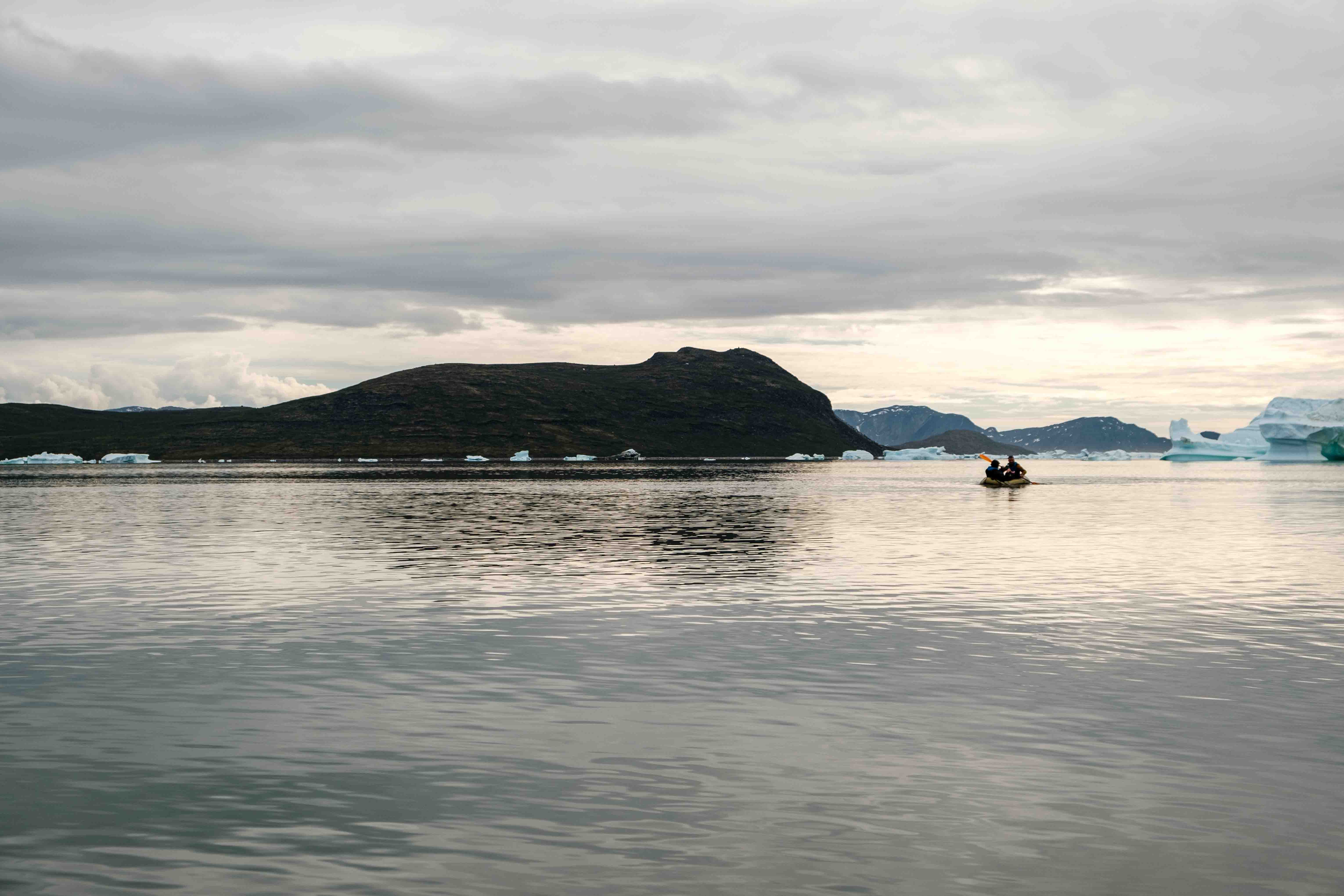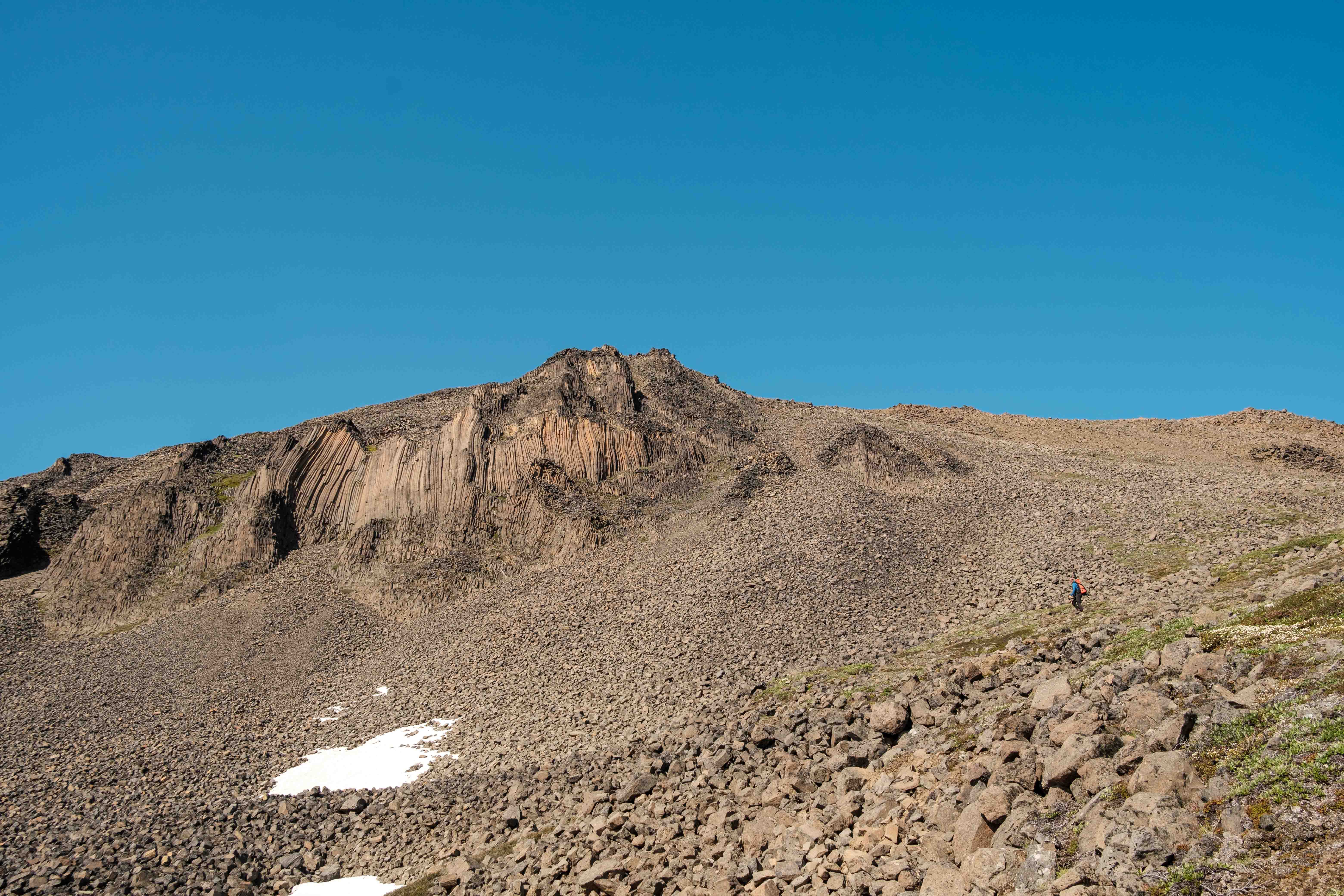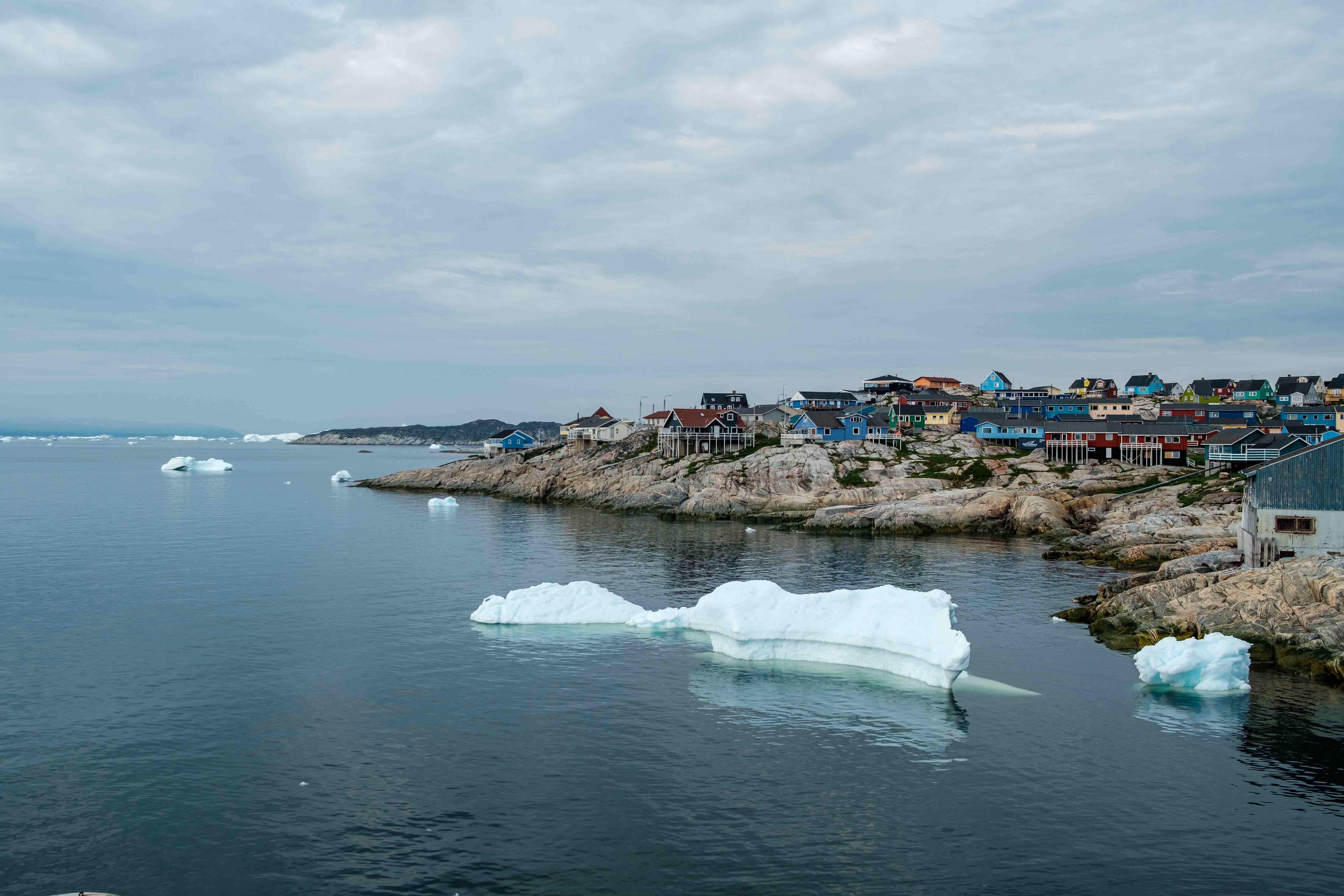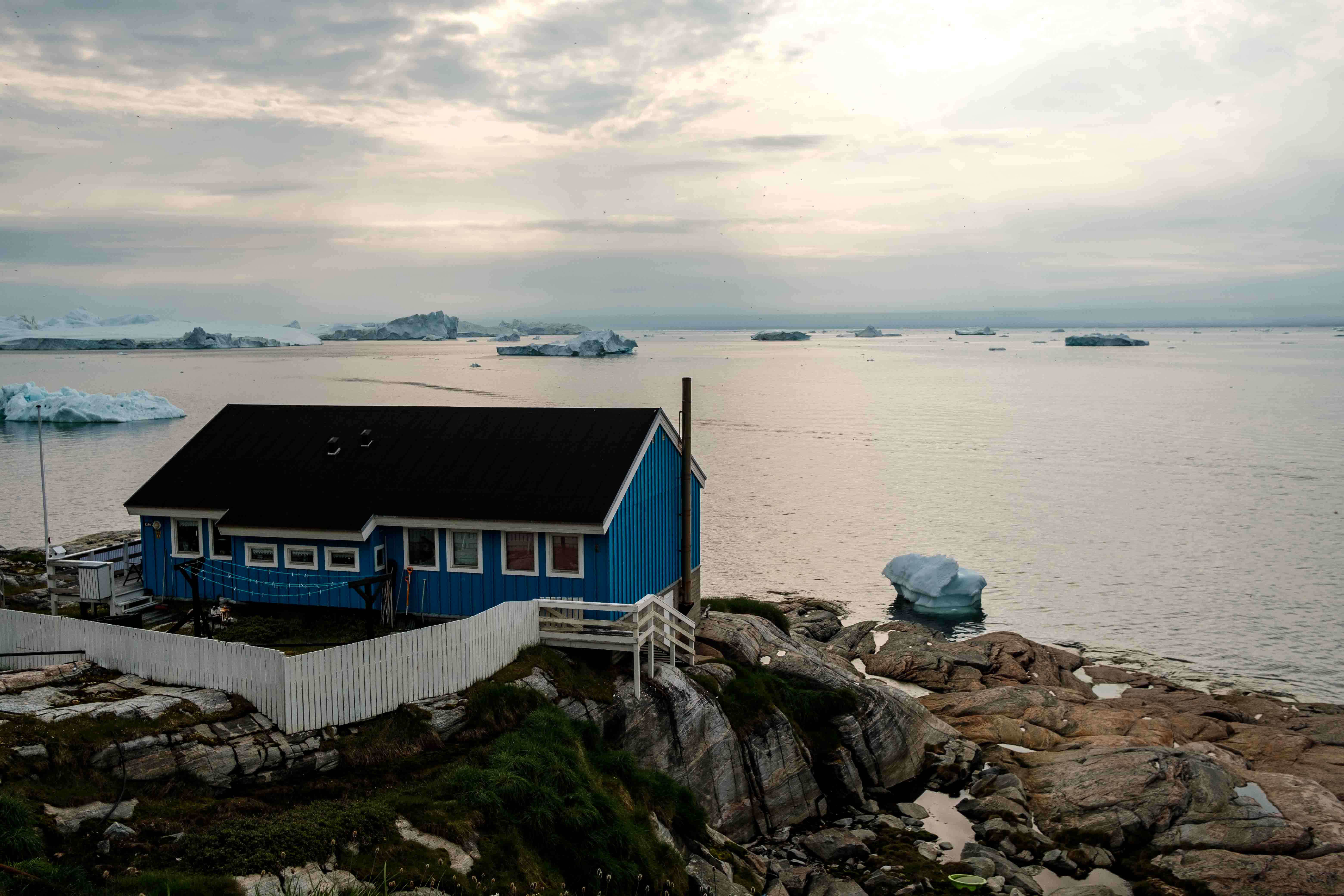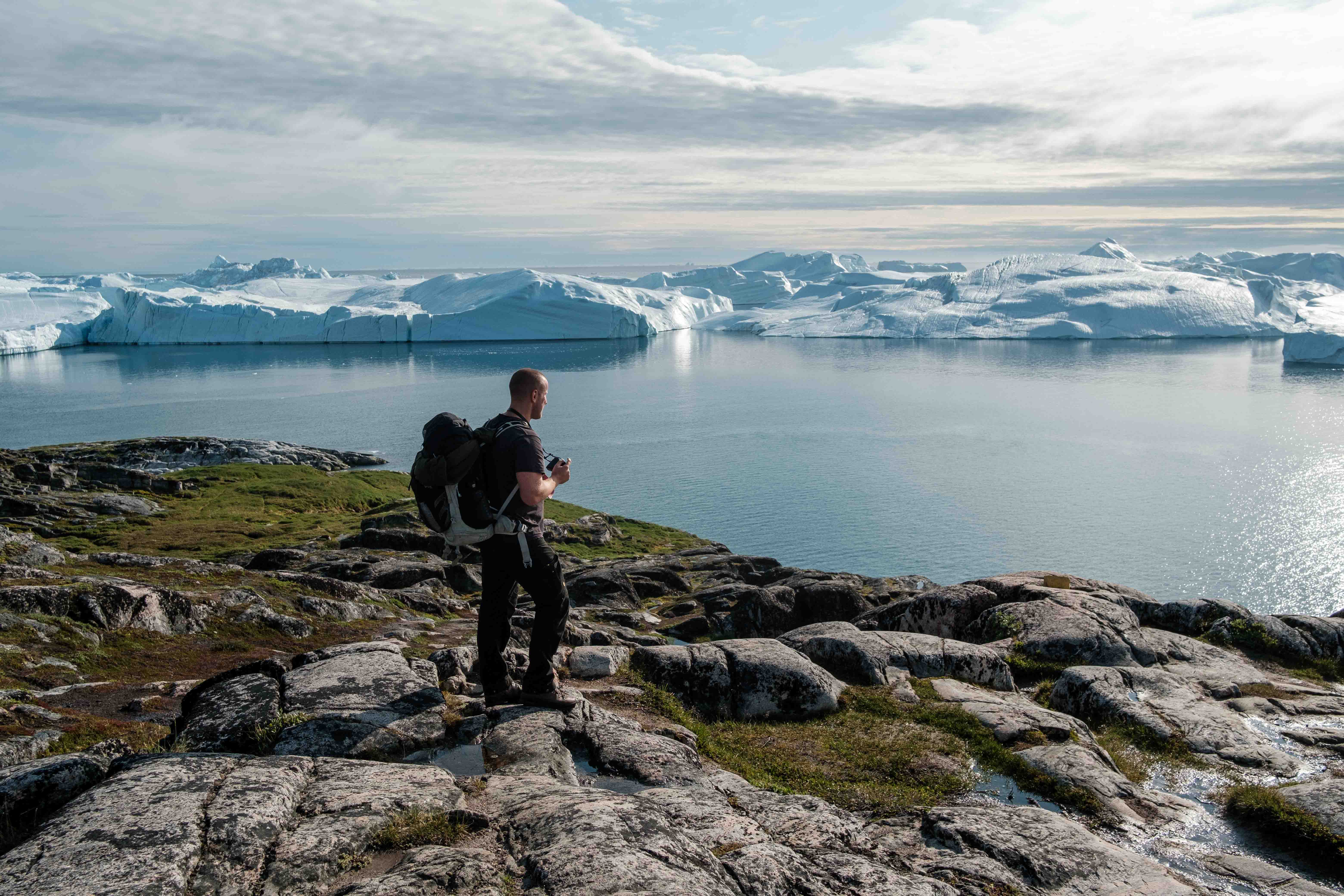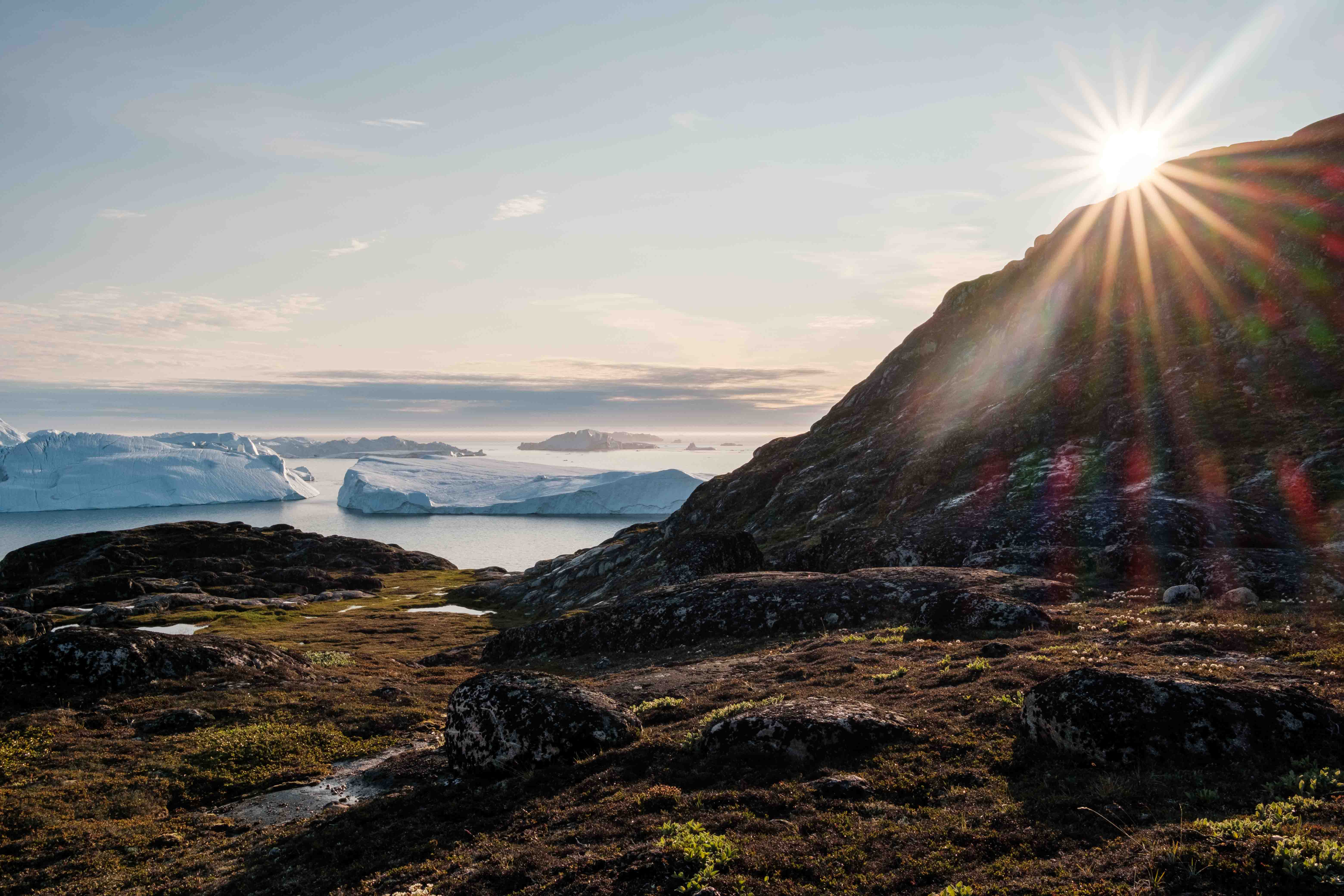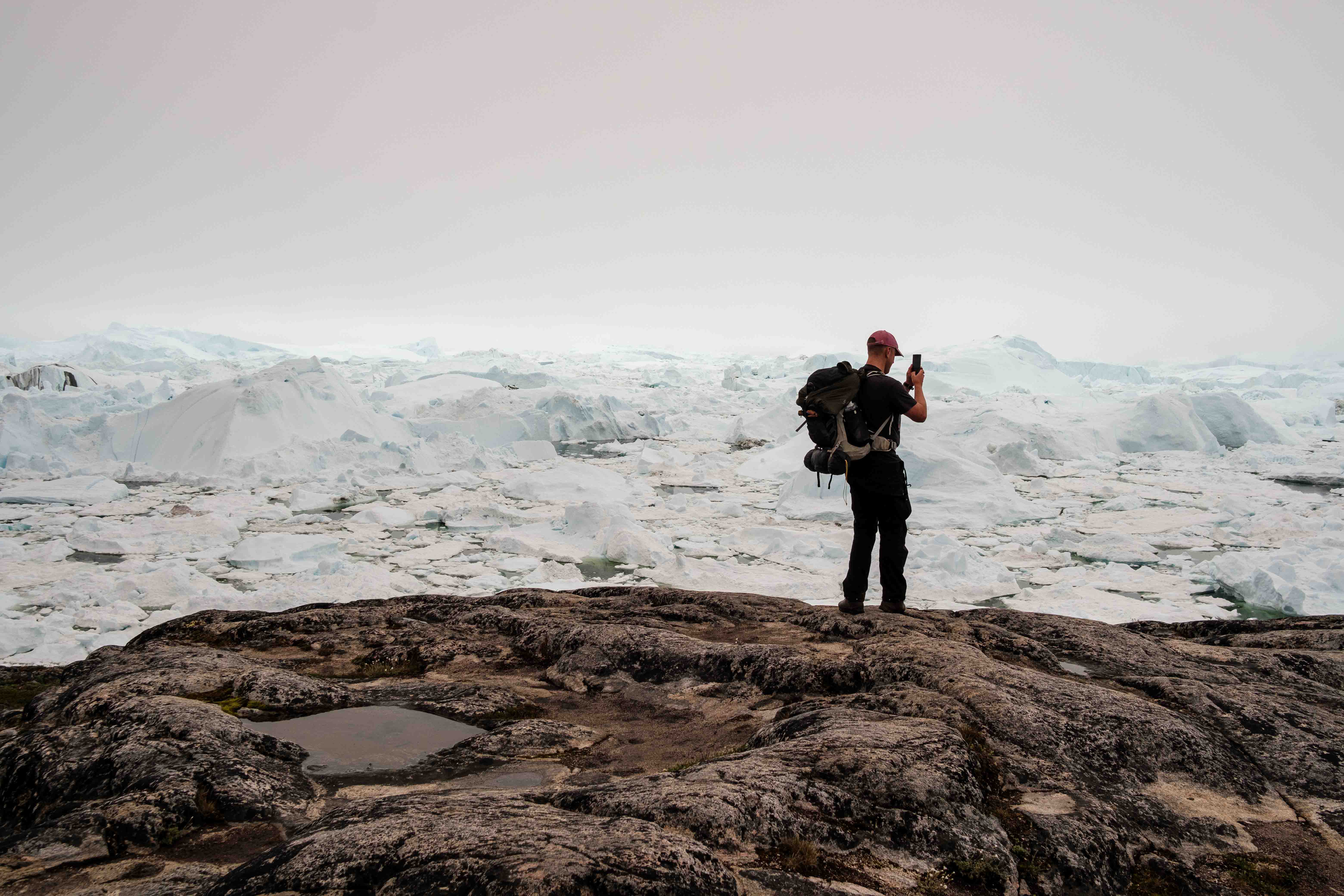/home/runner/work/fvmaldeg.github.io/fvmaldeg.github.io/content/en/blog/groenland3.md
We calculated an extra day in Ilulissat to send the samples after the field work, rest a bit, and score some souvenirs. Of course, we didn’t know that we would already have time to discover Ilulissat during the first days of our trip. On the last day we enjoy a good dinner at a fancy restaurant, and stroll around, but you could say we are very ready to go home. Unfortunately, the weather gods decide differently. Again. In summer, there is often sea fog in Ilulissat which makes the departure and landing of the small propellor planes impossible. Normally the fog clears up by noon. This year, the fog doesn’t linger for hours, but for days. Hundreds of people are stuck in Ilulissat because of the lack of planes, including us. AirGreenland has some trouble finding beds for everyone because of the large amount of people. They even put out a call on facebook in the hope that some of the locals have a spare bed or room for the stranded. The people in the airport write down our names, put some meal vouchers in our hands, and tell us they will try to find a place to stay and will contact us if they do. When we will be able to leave Ilulissat, they don’t know either.
Disheartened, we return to our home base: Hotel Icefiord. They don’t have rooms anymore, and we also don’t really want to stay there anymore. We call a whole list of hotels (the same as the first days), but there is nothing free. In the mean time, Willem has left with his tent to explore along the icefjord until his group arrives. We (Will, Steven and myself) go around the center of Ilulissat once more. Since I was in doubt about buying a photography book as a souvenir, and we are still here, we walk in World of Greenland. I buy the book (yay) and we get to talking with the girls behind the register. They are aware of the problems at AirGreenland and want to help. A friend of theirs is in Copenhagen and rents out her house in Ilulissat. They will check if it’s available. AirGreenland sends our new flight schedule: three days later than planned we fly to Kangerlussuaq, the next day to Copenhagen, and the day after to Brussels. After some calls with various airlines everything is arranged. Around 4 p.m. Maj (from World of Greenland) phones with the redemptive news. The house is free and we can stay there until our flight to Kangerlussuaq. Happy with each our own room and bed, and a big couch to slouch in, we cook a nice pasta with lots of vegetables.
The next days, we fill with walking around the icefjord, working, and spending meal vouchers in the local restaurants. On the day of our flight, we have lunch with Willem, who has returned from his mini expedition, and we said goodbye (for the second time). Without any further problems, we reach Kangerlussuaq. During a short walk before our flight to Copenhagen, we spot a reindeer there.
We arrive late in Copenhagen and say goodbye to Will. Steven and I try to sleep for about four hours in a hotel before our early flight to Brussels. And so our turbulent adventure in Greenland ends four days later than planned.
/home/runner/work/fvmaldeg.github.io/fvmaldeg.github.io/content/en/blog/groenland2.md
Luckily, we’ve anticipated. On Friday, we contacted Ivik, someone Willem knows and works with for boat transfers. We agree with Ivik that he drops us at two different locations along the coast, where we can search for micrometeorites. On Friday, we also identified two potential locations for the micrometeorite search. Conditions for a good location: hard bed rock, and high peaks that weren’t continuously covered during the glaciations in order to catch as much material as possible from the sky. Our first stop is a beach in a bay north of the village Qeqertaq. This turns out to be the favourite spot of a couple humpback whales. Every day, they greet us with splashes and the wave of a fin. Our camp is surrounded by granitic mountains 700 to 800 m high. The three peaks in walking distance are the target for the next three days. Following the dropoff, we set up camp on the beach close to a river. Happy to finally start our fieldwork, we aren’t even that bothered by the mosquitos (yet).
The first day is rainy and that makes the terrain more difficult. We start along the beach, hopping over and between rocks. This is followed by very wet, ankle-high bushes, leading to drenched shoes and feet. To get higher, we have to climb some slippery boulders. Because of a fall on my knee, Steven and I return to camp early, while Will and Willem climb on to the top. After a long day, they reach camp with the first samples. I spend day 2 in the camp to offer my knee some rest. Luckily, the weather has improved. However, when the three guys return that night, they have again wet feet, thanks to the snow fields higher up. The last peak is a bit further. The route starts with 4 km along the coast, luckily with less rocks than day 1. To spare my knee a bit, I use the packraft and tackle the first kilometers on the water. Then we go landinwards to and start climbing to collect the final samples from this area. On the peak, we search for cracks or a flat surface where a lot of sediment could accumulate. The chosen spot is photographed and then we scoop all the loose sand in bags to take with us and process in the lab. After a long descent along the boulders and a quick photoshoot of Will on an iceberg, we reach the camp. In the evening, a family of polar foxes passes by to say hi. We clean up camp, ready for the boat transfer to our next location: Disko Island.
There we follow the same rythm. Set up camp, a walk to fill the day and preparing for the next two peaks. Our tolerance for the mosquitos is also a lot lower already. The terrain on Disko is mainly made up of basalt and sedimentary rock, which is much more pleasant to hike (read: very little boulders), and we make quick progress. There is a lot of sea fog, but soon we climb above the clouds and we can see the peak made up of beautiful basalt pilars. We collect again multiple kilograns of loose sediment to search for micrometeorites and descend to our foggy camp to make a camp fire. Way to soon, it is the final day. It is again a long hike, but we are rewarded with a view of the impressive mudderbuchten (or mud bay) and many more samples to take home. After this last day, we say goodbye to Disko and Ivik picks us up with the boat to go back to Ilulissat.
/home/runner/work/fvmaldeg.github.io/fvmaldeg.github.io/content/en/blog/groenland1.md
On Tuesday July 18th, Willem (the field guide), Steven (the supervisor) and myself (the PhD student) leave for Copenhagen from Brussels airport. After a stressful moment, thanks to an overbooked flight, Willem manages to get on the same plane. We land in Copenhagen and spend one night in a hotel before we travel onwards to Greenland.
At the airport of Copenhagen, we meet Will (the British PhD student from Copenhagen). We continue our journey, first to Kangerlussuaq and then, with a small propellor plane, to Ilulissat, catching the first glimpses of the Greenlandic ice sheet. Upon arrival, we inquire for the last updates on our helicopter flight the next day. The people at the airport seem oblivious and just tell us to be at the airport one hour before.
The moment we leave the tiny airport, Wills phone rings. It’s the charter service of AirGreenland. Quickly, Will passes the phone to me. On the other side of the line follows an incoherent explanation about our helicopter. Even though we arranged this in November 2022, it suddenly is not available anymore. We are stunned. Our fieldwork depends on the helicopter, because there is no other way to reach the planned location. We regroup in hotel icefiord and decide to not be pushed aside just like that. After some emails, phone calls and mild threats with AirGreenland, they promise to fine a solution for us. Thus far the longest Wednesday of my life.
The next morning, we wait in suspense for the redeeming phone call. They have a plan: instead of the one big helicopter that we booked (which is apparently in Rotterdam as we will learn later) they will fly us in two trips with a smaller helicopter. Excited to leave, we make the final preparations. Unfortunately the weather was not as happy to cooperate. There is too much fog, so we can’t take off. The rollercoaster of emotions continues. In the evening, the weather clears, and because there is no free spot in a hotel, but mainly to appreciate the beautiful surroundings a bit, we put up our tents along the icefiord and enjoy the midnight sun on the icebergs.
AirGreenland reschedules us for Saturday. On Friday, we kill some time with a walk, hiding for the rain in hotel icefiord (where the staff is getting to know us) and speculate options in case the weather is bad the next day. The alternatives will be necessary. On Saturday, it is again too foggy. No helicopter for us…
